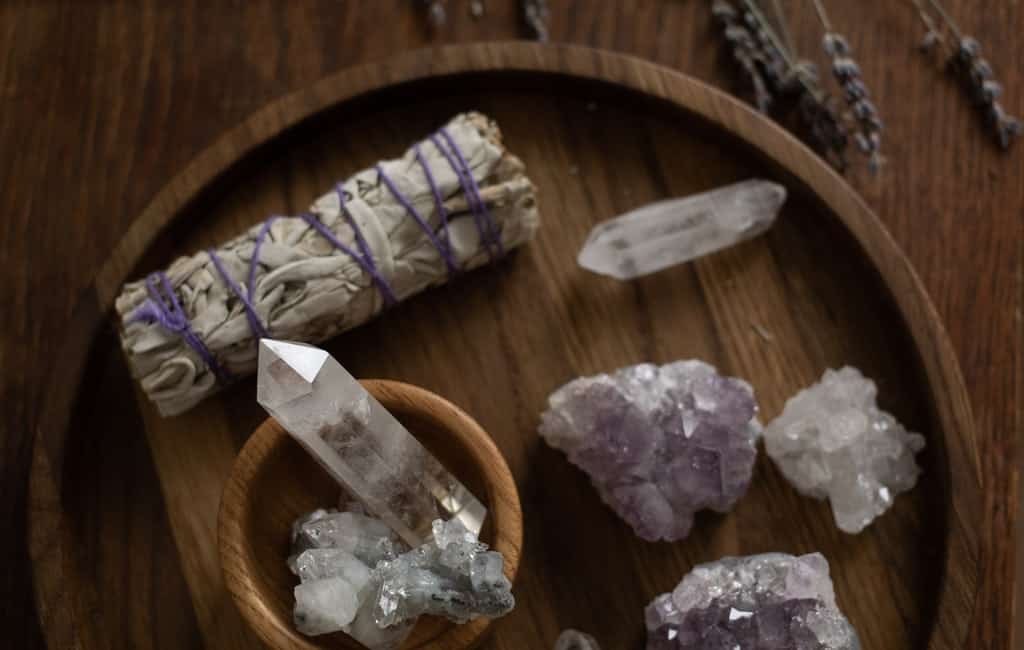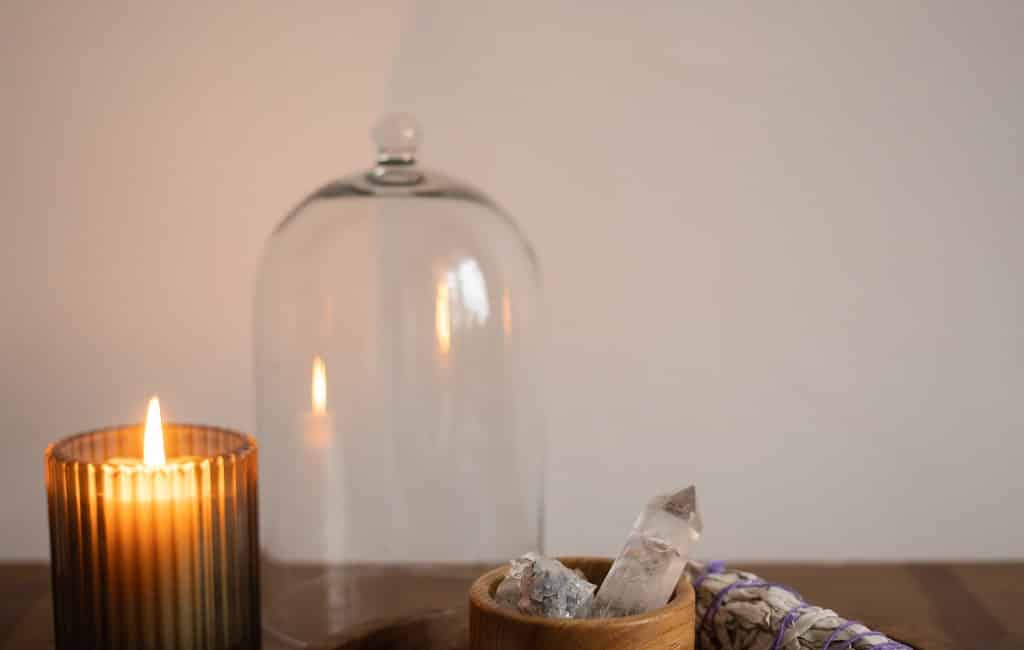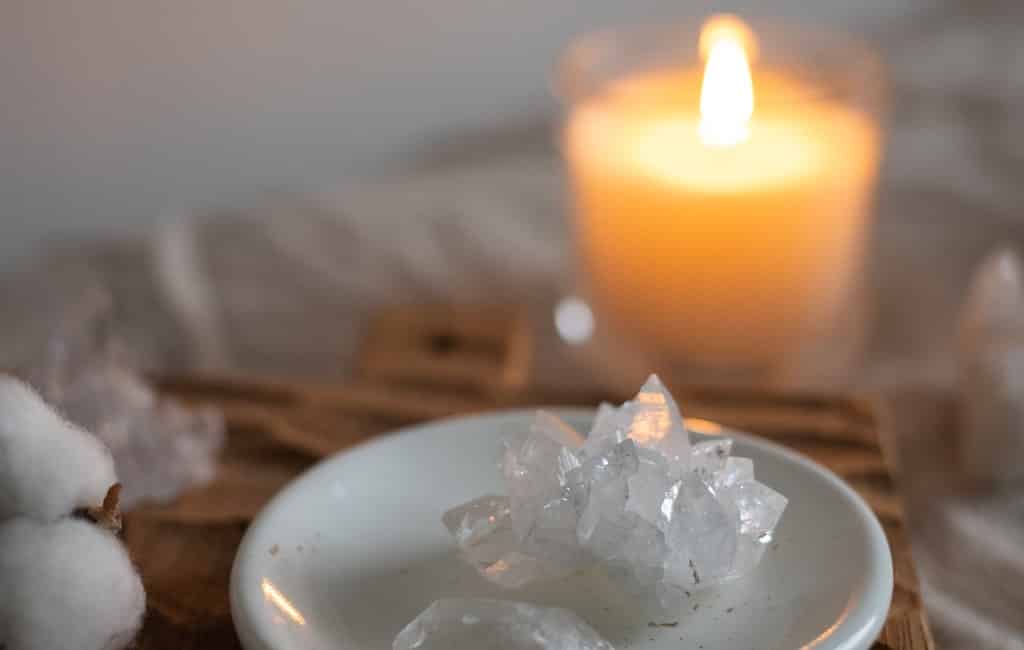Over 300 gemstones have been identified, ranging from commonly available or of low grade to highly rare, pure, and valuable, often fetching astonishingly high prices. These stones, which are made of numerous organic materials including rocks and minerals, were formed by the Earth over millions of years under many different situations.
Due to how expensive they are, unless you can afford to spend a lot of money on one of these beauties or can visit a museum that has a specimen on display, you might never get to view the rarest jewels in the world in person. A select few are given the opportunity to visit private collections.
This list was created to provide you with a closer look into the rarest and most expensive diamonds in the world.

10. Tanzanite
Discovered At: Merelani foothills of Mount Kilimanjaro in Tanzania
Year Discovered: 1967
Color: Blue to Violet/Purple
Price: $600 to $1,200 per carat
Because tanzanite is so uncommon, it may run out of mines in 20 to 30 years. The unique and isolated location of this stunning gemstone’s origin, at the foothills of Mount Kilimanjaro in Northern Tanzania, from where it derives its name, is thought to be the reason for its rarity.
Tanzanite was found in 1967 by Masai tribesman Ali Juuyawatu and is even rarer than diamonds. The gem’s most valuable hue is a heat-induced blue that rivals the color of the blue sapphire. When tilted, it changes color and is made of calcium, aluminum, silicon, hydrogen, and oxygen. This diamond became well-known thanks to Tiffany & Company’s effective marketing strategy.

9. Poudretteite
Discovered At: Poudrette Quarry of Mon. Saint Hilaire, Quebec
Year Discovered: Mid 1960s
Color: Transparent violet to Pink
Price: $3,000 per carat
Poudretteite, one of the rarest gems known to man, was found at a quarry owned by the Poudrette family near Mon. Saint Hilaire, Quebec, in the 1960s. A 3ct rough was discovered in Mogok, Burma, in 2000. Previously, tiny crystals of no geological significance were thought to exist. Although one of the Mogok pieces was the largest ever documented, cut from a rough 22ct down to a clean 9.4ct gem, this gemstone rarely yields clean specimens over 1ct.
Poudretteite and Scapolite, a group of silicate minerals that form rocks, have occasionally been mistaken for one another. Another element that contributes to its rarity is the excellent grade, delicate pink Poudretteite, which is found in the most sought-after specimens. Potassium, sodium, silicon, boron, and oxygen make up this gem.
8. Benitoite
Discovered At: San Benito County, California
Year Discovered: 1907
Color: Blue to purple
Price: $3,000 to $4,000 per carat
Benitoite was initially found by George D. Louderback in 1907 in San Benito County, California. Although there are modest occurrences in Arkansas and Japan, the only mine that produces commercial quantities of benitoite is the original site, which makes the gems even more rare. This stone is peculiar because, when seen by UV light, it appears to be glowing, brilliant-blue chalk.
Benitoite typically ranges from a carat or less to three carats. Since 1985, when it was made the state gemstone of California, it has been highly sought after by collectors and only occasionally used to make jewelry. Barium, Titanium, Silicon, and Oxygen make up this gem.
7. Black Opal
Discovered At: Lightning Ridge, New South Wales, Australia
Year Discovered: 1873
Color: Black with various patterns of bright colors
Price: $2,300 to $3,500+ per carat
After Black Opal was discovered in 1873, it took a while for people to realize how valuable it was. Some believe this gem to be a strange rock that resembles fire or lightning because of the spectacular swirls and patterns of iridescent color it displays against its dark background. It only exists in small amounts in one other site, Mintabie, South Australia, and is native to a little community named Lightning Ridge.
Although Black Opal is the rarest of its kind, opals are Australia’s national gemstone. There are many valuable designs with flashes of bright color, and the best specimens are those that reveal their color from a distance of many feet. These gems are special since each piece is distinctive.
6. Taaffeite
Discovered At: Dublin, Ireland (from a collection of specimens brought from Sri Lanka)
Year Discovered: 1945
Color: Colorless to light violet or mauve
Price: $1,500 to $2,500 per carat
Taaffeite, after its discoverer Richard Taaffe, was found in a jeweler’s shop in Dublin, Ireland, and is thought to be over a million times rarer than diamonds. It was identified as a new find in the field of precious stones after sending samples to a specialist to rule out Sri Lankan spinel. Lower grades have also been discovered in China, where they have been found in alluvial deposits in Sri Lanka and Southern Tanzania.
This rare gem, which can be found in carbonate rocks with spinel, tourmaline, mica, and fluorite, is typically unsuitable for faceting, making it even more difficult to locate. Taaffeite resembles amethyst in appearance but is stronger and made of magnesium, beryllium, aluminum, and oxygen.
5. Red Beryl
Discovered At: Thomas Range, Juab County, Utah
Year Discovered: 1904
Color: Strawberry to Dark red and sometimes orange
Price: $10,000 per carat
Although it goes by several names, Red Beryl is currently categorized as a beryl despite originally being considered an emerald. This gem was first mined at Maynard Bixby’s Violet Mine but production was meager. It was first found in 1904 in the northern Thomas Range in Juab County, Utah. Lamar Hodges staked the Ruby Violet Mine after discovering gem-grade reserves there in 1958 while searching for uranium. It was later mined there with greater success.
Red beryl is also mined in Mexico and New Mexico, although Utah produces the highest-quality specimens. This diamond is said to be 1,000 times more precious than gold because of its rarity and the special conditions needed for it to form. Beryllium, Aluminum, Silicon, and Oxygen make up red beryl.
4. Alexandrite
Discovered At: Ural Mountains of Russia
Year Discovered: 1830
Color: Green to red (depending on the light)
Price: $12,000 per carat
Alexandrite was first believed to be an emerald when it was found in the roots of a tree that had fallen in a storm by a Russian peasant in 1830. This gem’s capacity to change colors makes it special. Alexandrite appears as pink in candlelight but is green in sunshine. As a result, the proverb “emerald by day, ruby at night” was created.
This gem, which bears Czar Alexander II’s name, has also been discovered in Sri Lanka, Brazil, and East Africa. High quality Alexandrite is extremely rare and was almost mined out when the original mines in Russia were depleted. It is prized by collectors all over the world. Aluminum, oxygen, and beryllium make up this jewel.
3. Jadeite
Discovered At: Burma and China
Year Discovered: 1863
Color: Light to deep, translucent green and other colors
Price: $20,000 to $30,000+ per carat
The prime source for Jadeite is in Myanmar (Burma) although it’s also found in Japan, Kazakhstan, Guatemala, California and in the Ural Mountains in Russia. This gem is more valuable when colored deep, translucent green and is mostly found in small quantities. Christie’s Auction House sold a Jadeite necklace in 1997 for almost ten million dollars.
With a long history dating back to ancient Mesoamerica, where it was used for making weapons and tools, some fine specimens nowadays can fetch upwards of one million dollars per carat. Jadeite has been the Jade of choice for many Chinese artists throughout history and it’s comprised of Sodium, Aluminum, Iron, Silicon and Oxygen.
2. Musgravite
Discovered At: Musgrave Range, South Australia
Year Discovered: 1967
Color: Greenish-grey to purple
Price: $35,000 per carat
Despite the fact that musgravite has been found in minor deposits in places including Tanzania, Madagascar, Sri Lanka, Greenland, and Antarctica, there are only 10 gem-quality examples known to exist worldwide. Although it does have some competition in that category, this diamond is uncommon and some claim it to be the rarest stone in the world.
Musgravite and Taaffeite are sometimes mistaken for one another since they belong to the same “family.” This gem, also known as a dark and stormy stone and sometimes confused with amethyst, is formed under precise conditions with the perfect balance of the elements that make up its composition: magnesium, beryllium, aluminum, zinc, iron, and oxygen.
1. Painite
Discovered At: Myanmar (Burma)
Year Discovered: Late 1950s
Color: Orange to reddish-brown
Price: $50,000 to $60,000 per carat
The rarest gem is a subject of some debate. It’s safe to state that Painite is the rarest jewel in the world if you believe the Guinness Book of World Records and industry professionals. After Arthur C.D. Paine discovered the gem for the first time in Burma in the 1950s, there were only two specimens that were known to exist for a very long period. Some claim that Painite is irreplaceable and that its scarcity is a result of its rarity, yet a third and a fourth specimen appeared in 1979 and 2001, respectively.
A source outcrop of this stone was finally found in 2005, and hundreds of specimens have since been retrieved from it. Painite is even scarce because to the fact that so few gem-quality specimens have been preserved. The inclusion of boron and zirconium, which don’t exist together in any other minerals, is another element contributing to the gem’s rarity. The elements calcium, aluminum, and oxygen are also found in panite.
Conclusion
Levels of rarity and price, of course, depend on a wide range of variables, and to a certain extent, it actually depends on whom you ask. Honorable mentions might include the Padparadscha Sapphire, which is highly sought after by collectors, or the Pink Star Diamond, a large stone that can cost up to and over one million dollars per carat.
If you’re just starting out collecting precious stones, one thing is for sure: don’t mistake fake stones for genuine, high-quality specimens.

